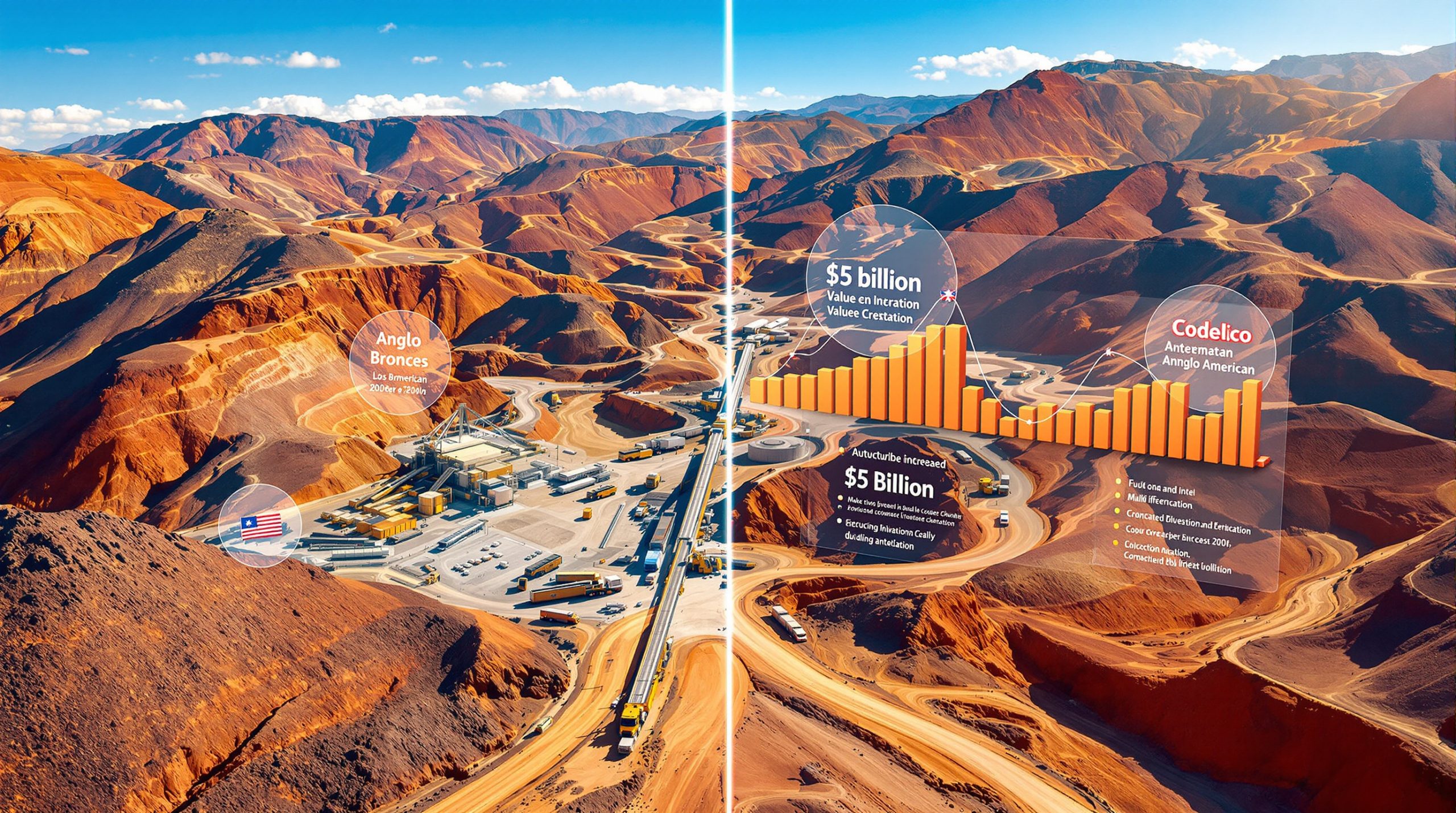Understanding the Critical Minerals Landscape
The global economy stands at a critical juncture where minerals once considered ordinary have become essential to technological advancement and energy transition. Critical minerals such as nickel, graphite, manganese, cobalt, copper, and lithium are projected to experience unprecedented demand growth—increasing by 200-300% by 2030, with even steeper trajectories for lithium and graphite specifically. This surge presents both opportunity and challenge, particularly considering the current 18-year average timeline from mineral discovery to operational mine.
Africa's role in this landscape cannot be overstated. The continent holds approximately 30% of the world's proven critical mineral shortages, though experts believe this figure significantly underestimates the true potential due to inadequate geological mapping across many African nations. South Africa and Gabon already dominate global manganese production as first and second-largest producers respectively, while the Democratic Republic of Congo (DRC) and Zambia possess copper reserves approximately 2.5 times larger than China's—highlighting the continent's geological abundance.
The strategic significance of these minerals extends beyond economic considerations. As essential inputs for semiconductor production, renewable energy technologies, and defense applications, minerals like gallium, germanium, and silicon underpin both prosperity and security. The rise of artificial intelligence and proliferation of data centers will only accelerate demand for these resources, transforming them from commodities into strategic assets.
Why U.S.-Africa Partnerships Make Strategic Sense
For the United States, critical mineral partnerships with African nations represent a strategic imperative rather than mere economic opportunity. Currently, China dominates global supply chains for numerous critical minerals, producing an estimated 44% of global refined copper in 2024 and controlling processing for gallium, germanium, and antimony. This concentration presents vulnerabilities that U.S. policymakers increasingly recognize as national security concerns.
By developing partnerships with mineral-rich African countries, the United States can simultaneously increase total mineral supply and diversify sourcing—both essential objectives for securing America's economic and defense industrial base. The geographic distance between Africa and China also offers strategic advantages for supply chain resilience during potential conflicts or disruptions.
African nations, meanwhile, seek partnerships that transcend the historical paradigm of raw material extraction and export. The African Mining Vision (AMV), adopted by the African Union in 2009, articulates a continental aspiration for "value addition and industrialization" that transforms mineral wealth into broad-based socioeconomic development. Similarly, the African Green Minerals Strategy emphasizes domestic "mineral beneficiation and mineral-based economic transformation" as pathways to industrialization.
These complementary needs create natural alignment for partnership. The United States possesses world-leading expertise in mining investment insights through institutions like the U.S. Geological Survey (USGS), Department of Energy's National Laboratories, and academic centers like the Colorado School of Mines. African countries offer abundant resources but often lack technical capacity, energy infrastructure, and trained personnel to develop their mineral sectors fully—creating opportunities for mutually beneficial collaboration.
The Strategic Case for U.S. Technical Expertise in Africa's Critical Minerals
Africa's geological under-exploration represents perhaps the most significant opportunity for U.S.-Africa technical collaboration. Many African nations continue to rely on geological surveys dating to the colonial era, with limited updates due to resource constraints within national geological agencies. The USGS, widely recognized as one of the world's premier scientific institutions, could provide crucial support in modernizing these surveys.
"The quality of geological data directly determines investment confidence," noted one participant at a recent Carnegie roundtable discussion. "Updated surveys could transform speculative resources into bankable reserves, benefiting both African development planning and U.S. supply chain diversification."
The United States possesses competitive advantages beyond basic geological mapping. The Department of Energy's seventeen National Laboratories conduct cutting-edge research on mining innovations, including extraction from non-traditional sources like tailings and recycled materials. As global copper ore grades have declined approximately 30% over the past two decades, these innovations become increasingly valuable for maximizing resource recovery.
Interestingly, Afrobarometer data reveals that many Africans view engagement with U.S. technical experts more favorably than collaboration with former colonial powers or newer entrants like China. This perception advantage stems partly from transparency concerns with European and Asian counterparts, creating natural openings for U.S. technical partnerships based on mutual respect and shared objectives.
The strategic placement of processing facilities represents another opportunity for mutual benefit. Currently, raw ore travels from African mines to overseas facilities for refining—creating inefficiencies and vulnerabilities. Locating midstream activities closer to extraction sites reduces transportation costs while adding value within African economies. U.S. firms like ReElement Technologies demonstrate how innovative processing methods can operate efficiently in African contexts, using less energy and water than traditional approaches.
Long-term success, however, depends on human capital development. The USGS already incorporates capacity building in its international work, partnering with U.S. academic institutions to provide training for African geologists and engineers. Expanding these programs through land-grant universities with mining expertise could create sustainable knowledge transfer that ensures African ownership of mineral development.
Recommendations for Expanding U.S.-Africa Technical Collaborations
Improving geological mapping and data collection should form the foundation of enhanced U.S.-Africa partnerships. Despite having competent and motivated geologists, many African countries lack the resources for comprehensive surveys. Technical support from the USGS and academic partners would benefit both sides: African countries could design more effective development strategies based on accurate resource assessments, while U.S. policymakers could craft better-informed partnership frameworks.
Even existing data can yield new insights through advanced technologies. An estimated 80% of African geological data remains siloed in incompatible formats or paper records, yet artificial intelligence and machine learning can extract value from these datasets. In Tanzania, for example, machine learning algorithms reprocessed colonial-era surveys to identify previously overlooked lithium deposits. U.S.-based entities like Kobold Metals already deploy such technologies in Zambia, while DARPA and the Department of Energy develop similar capabilities that could be shared through technical partnerships.
Supporting midstream development represents perhaps the most promising area for mutual benefit. U.S. industrial consumers require processed inputs—silicomanganese for steelmaking, cobalt sulfide for batteries, refined germanium for semiconductors—while African countries seek industrialization through these same value-added activities. Energy Secretary Chris Wright noted that "U.S. energy technology exports can unlock industrial activity in Africa while securing mineral inputs for American industry"—creating win-win outcomes.
However, implementation requires flexibility rather than one-size-fits-all approaches. The varying levels of industrialization, energy access, and transportation infrastructure across African countries necessitate tailored strategies. While regional frameworks like the Southern African Development Community (SADC) provide useful coordination mechanisms, bilateral arrangements may prove more effective in specific contexts.
Past initiatives offer important lessons for contemporary efforts. The African Minerals Skills Initiative launched in 2009 ultimately faltered during commodity price downturns, highlighting the importance of insulating partnerships from market volatility. Similarly, the African Minerals Geoscience Initiative encountered challenges related to data ownership and accessibility. "Resolving tensions between data access for investment attraction and legitimate national security concerns remains crucial," advised a Carnegie roundtable participant, referencing these historical experiences.
The Future of U.S.-Africa Critical Minerals Partnerships
Successful partnership frameworks must balance multiple priorities: mutual benefit, respect for sovereignty, alignment with U.S. strategic interests, and compatibility with African development objectives. The most promising approaches focus on specific segments of mineral value chains where African countries possess comparative advantages—particularly midstream processing located near extraction sites.
Value addition should proceed in phases rather than attempting to leapfrog directly to advanced manufacturing. "Phased value addition ensures commercial viability," noted a Zambian policymaker, contrasting strategies that risk investor withdrawal. World Bank projections suggest Africa could capture 15% of global battery precursor production by 2030 through targeted investments in processing capacity—a realistic goal that builds on existing capabilities.
Energy infrastructure represents a critical enabler for mineral processing. The U.S. National Energy Dominance Council prioritizes energy technology exports to support African industrialization, recognizing that pyrometallurgical techniques require reliable, affordable power. Innovative approaches like modular refining units can reduce initial capital requirements, while renewable energy integration—such as Kenya's geothermal-powered titanium processing—aligns with sustainability objectives on both continents.
Gabon's manganese beneficiation plant, built with U.S. technology, demonstrates the potential of these partnerships. By exporting high-purity manganese dioxide rather than raw ore, the facility adds approximately 40% value to mineral exports while creating skilled employment opportunities. Similar successes could be replicated across other minerals and countries through dedicated technical collaboration.
Trade policy flexibility remains essential for balancing competing objectives. While targeted restrictions on raw mineral exports can incentivize domestic processing, blanket bans risk driving investors to other jurisdictions. Policies that gradually increase local content requirements while providing technical support for compliance offer more sustainable pathways to industrialization.
Addressing market volatility also requires creative solutions. Critical mineral stockpiling programs, modeled on the U.S. National Defense Stockpile, could buffer against price fluctuations that historically undermined African industrialization efforts. Regional security frameworks like ECOWAS can mitigate risks in high-conflict mining regions, ensuring stable production and processing environments.
Expanding Knowledge and Investment in U.S.-Africa Mineral Partnerships
The knowledge gap surrounding Africa's mineral potential represents both challenge and opportunity. The continent's geology of ore deposits often date to colonial administrations, with minimal modern exploration using contemporary techniques. U.S. geological expertise could help quantify resources more accurately, potentially revealing significant reserves beyond current estimates.
Investment models must evolve beyond traditional approaches that extract raw materials without building local capacity. The Colorado School of Mines and other U.S. institutions already partner with African universities to train engineers in sustainable mining practices—models that could be expanded through formal government support. Ethiopia's Green Legacy Initiative demonstrates how environmental restoration can integrate with mineral development, creating holistic approaches to resource management.
Establishing standardized infrastructure through concepts like a "U.S.-Africa Critical Minerals Corridor" could connect mines, processing hubs, and ports with consistent standards and interoperable systems. Such corridors would reduce logistics costs while facilitating value addition at strategic nodes along supply chains.
Blockchain traceability systems ensure ethical sourcing while meeting U.S. regulatory requirements like the Dodd-Frank Act's conflict minerals provisions. These technologies provide confidence to consumers and manufacturers concerned about environmental and human rights impacts—increasingly important considerations in global mineral exploration strategies.
Conclusion: Advancing Mutual Benefits Through Technical Partnerships
How to advance U.S.-Africa critical minerals partnerships in mining and geological sciences requires recognizing the complementary needs and capabilities of both parties. For the United States, African minerals represent essential inputs for economic prosperity and national security. For African nations, U.S. technical expertise offers pathways to industrialization beyond raw material extraction.
Success depends on moving beyond transactional relationships to genuine partnerships built on knowledge sharing, capacity building, and mutual respect. The USGS, Department of Energy National Laboratories, and U.S. academic institutions possess world-leading expertise that can help African countries maximize the benefits of their mineral endowments—creating durable supply chains resilient to disruption.
By focusing on geological mapping, advanced data analysis, midstream processing, and human capital development, U.S.-Africa partnerships can transform critical minerals from potential sources of conflict and exploitation into foundations for sustainable development and strategic alignment. As global demand for these minerals continues its exponential growth trajectory, establishing such partnerships becomes not merely beneficial but essential for both African prosperity and American security. Furthermore, adopting digital mining innovations can accelerate these collaborative efforts and ensure efficient resource management for decades to come.
Looking for the Next Major Mineral Discovery?
Stay ahead of the market with real-time alerts on significant ASX mineral discoveries through Discovery Alert's proprietary Discovery IQ model, which transforms complex geological data into actionable investment insights. Explore historic examples of exceptional returns on major discoveries by visiting Discovery Alert's dedicated discoveries page and begin your 30-day free trial today.




